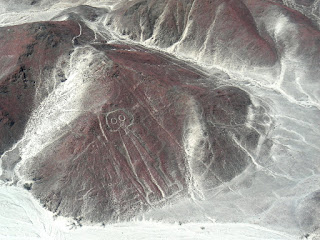- geoglyphs carved in the middle of the desert hundreds of years ago
by pre-Incans that are only visible by air. I took a flight in a
Cessna to view the lines, but archeologists are baffled as to how the
ancient people created the drawings. Since they are only able to be
seen from above, it is a mystery how the geometry was worked out
initially. Incidentally, most Peruvians I talked to are convinced
that the Nasca people used San Pedro cactus to create the drawings -
the incredibly-potent hallucinogenic supposedly allowed the Nasca
people to leave their bodies, fly above the desert, and direct the
drawings from the air.
The other interesting thing to do in Nasca is sandboarding. I hiked
for hours through the desert before dawn to climb the world's tallest
sand dune (2,000 meters!) only to slide down the whole thing in about
25 minutes. It was amazing, but I was camera-less for fear of ruining
lenses with sand. Seriously a beautiful hike though.












